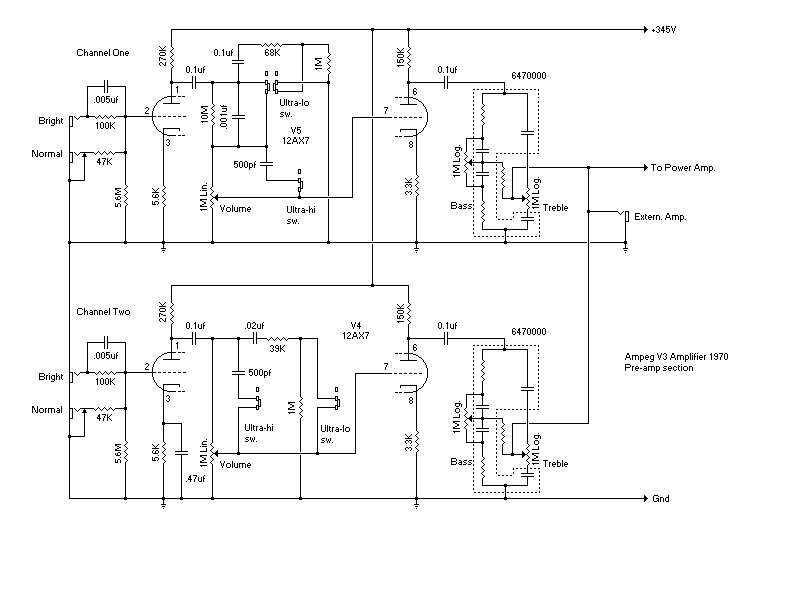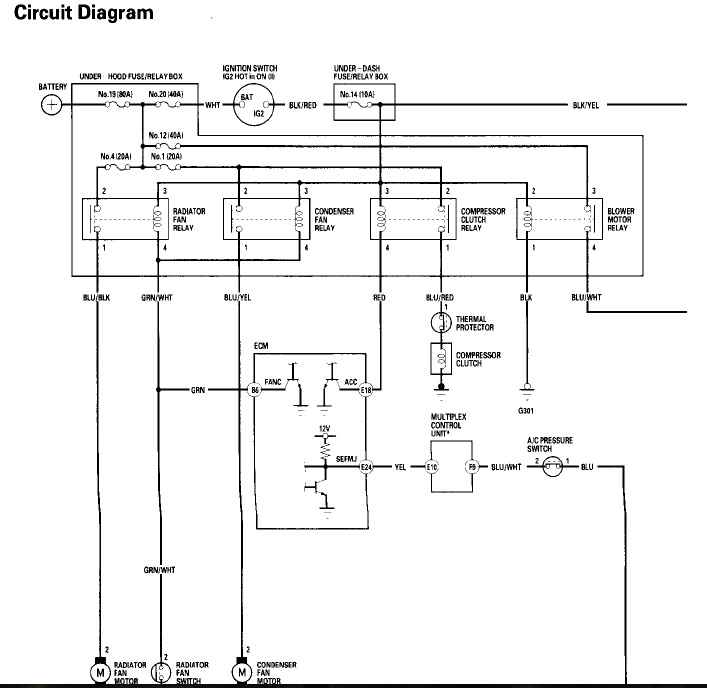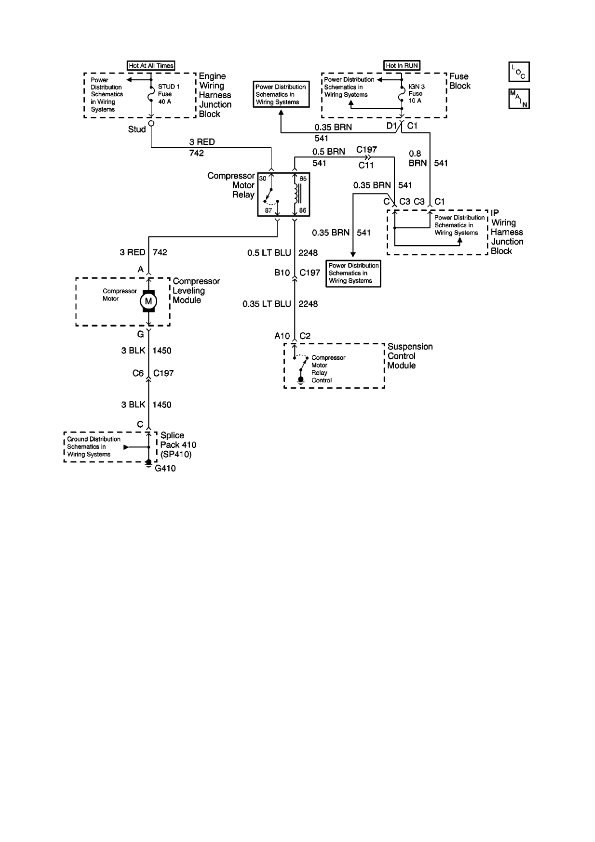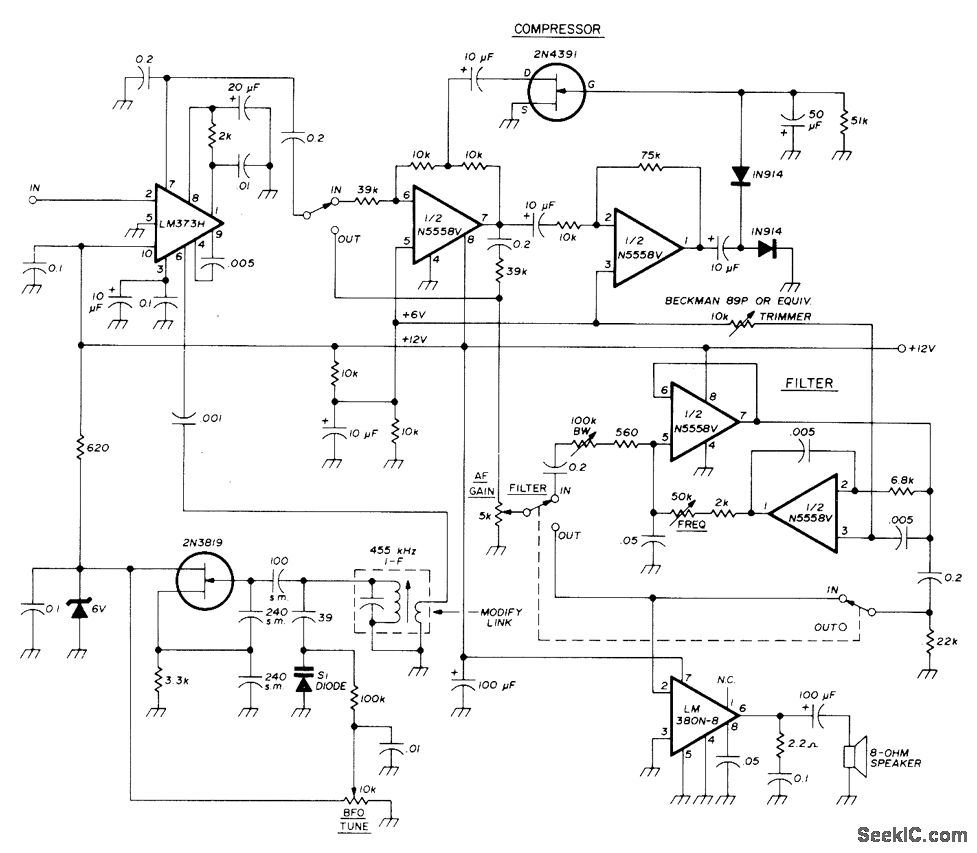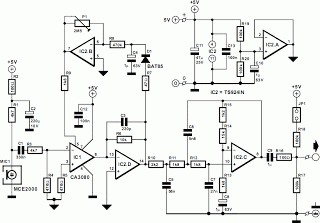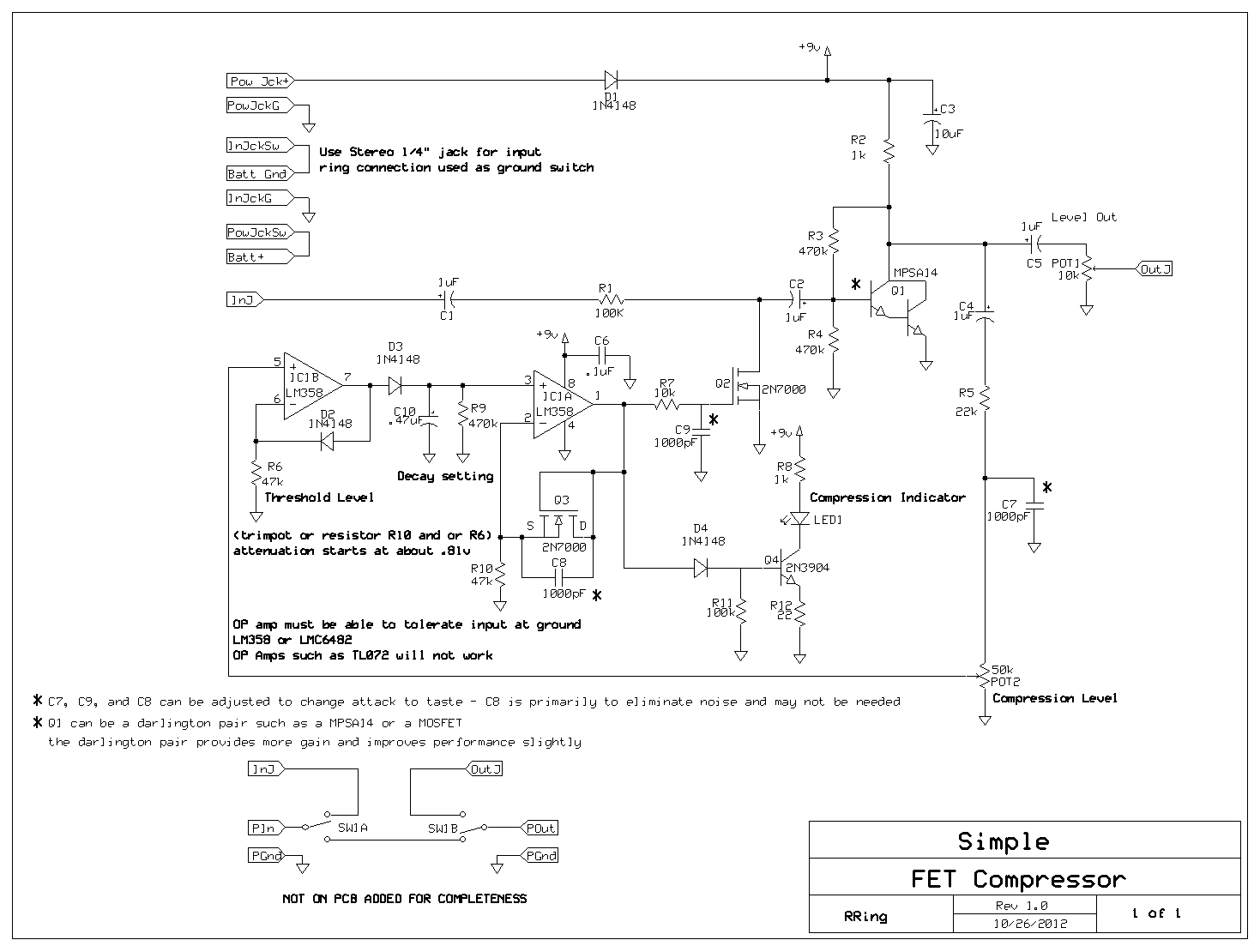
compressor
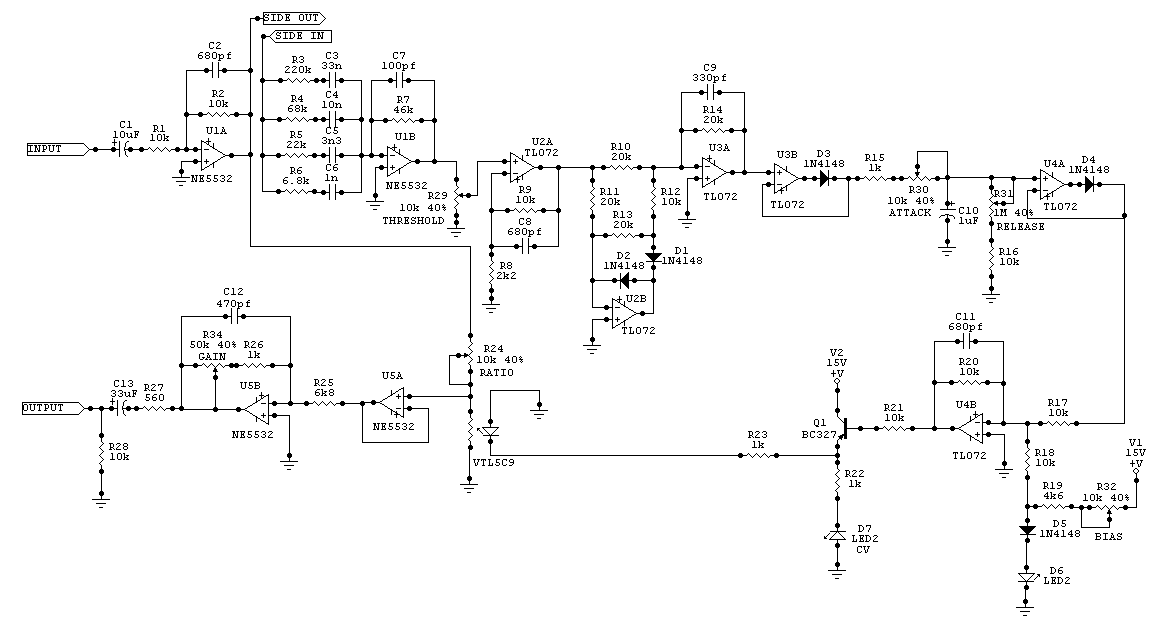
Many audio DIY enthusiasts are likely familiar with "What Compressor," a project that originated from one individual's dissatisfaction with the Alesis 3630 compressor and an admiration for a friend's Joe Meek device. The creator, known as DeeT, has shared his story and schematic, but not his printed circuit board design, which is unfortunate. The complexity of the circuit makes wiring on a Veroboard challenging. Additionally, few individuals possess the necessary skill or patience to work with the surface mount devices used in the ten prototypes mentioned on his page. There is another site that addresses this intriguing design and provides a PCB layout, but the choice of op-amps in that version is disappointing. DeeT specifically notes that substitutions for the MC33178 op-amp should be low-noise devices capable of driving 600-ohm loads. The NE5532 is a suitable choice due to its extremely low noise and distortion at 600 ohms. Unfortunately, the PCB design from the 1176neve site is based on JFET TL074 quad devices, which do not meet the specifications outlined by DeeT. The MC33179, a quad version, is even harder to find than the MC33178. Consequently, using dual op-amps, including the originally specified MC33178, would require extensive modifications to the layout. Interestingly, data sheets indicate that the distortion from the MC3317* family at 600 ohms is not as favorable as suggested. The NE5532 outperforms it significantly in terms of distortion at both 1 kHz and 10 kHz. DeeT's emphasis on selecting a quality op-amp is valid, as the optoisolator can present these loads when driven hard. DeeT's rationale for omitting controls on his "What Compressor" is understandable, as he intended to create a dedicated vocal compressor. However, his earlier design, the Joe Cheep, includes an attack control and lacks the "April resistor," which mixes a preset ratio of unprocessed signal into the compressed one. This absence arguably makes the earlier semi-passive design more versatile. The printed circuit design incorporates the return of the attack control from the Joe Cheep and a variable release control. The "April resistor" and mix control from the previous version have been removed; for mixing a dry signal with the compressed one, a separate mixer should be used. The gain control value has been adjusted for a wider range, and the "COMPRESSION" control has been relabeled as "THRESHOLD" for accuracy. A side chain input/output has been included, which can be connected to a normal TRS 1/4" jack for easy access to the side chain (pre 3dB/Oct filter). If this option is not used, the points should be jumpered together. DeeT's specification indicates that the compression ratio of his "What Compressor" is 1.5:1, which is quite minimal and may contribute to the unit's transparency. An added ratio control allows the circuit to adjust from 1:1 to negative reduction. With the inclusion of attack/release control and the ratio knob, the unit has evolved significantly from the original design, offering a range from subtle to extreme effects.
The "What Compressor" circuit presents a sophisticated approach to audio processing, emphasizing low noise and minimal distortion. The design utilizes a feedback loop to control gain reduction, which is critical for maintaining audio integrity during compression. The inclusion of both attack and release controls allows for fine-tuning of the dynamic response, enabling users to shape the transient response to their needs. The side chain functionality provides additional versatility, enabling external processing or filtering before the signal is compressed, which can be particularly beneficial in complex audio environments.
The choice of op-amp is vital in the design, as it directly influences the noise floor and distortion characteristics of the compressor. The NE5532, with its low noise specifications, is favored for applications demanding high fidelity. The circuit's ability to handle 600-ohm loads ensures compatibility with various professional audio equipment, making it suitable for studio and live applications.
The adjustment of the compression ratio from 1:1 to negative reduction introduces creative possibilities, allowing for effects such as upward compression, which can enhance the perceived loudness of quieter signals without distorting louder ones. This flexibility positions the "What Compressor" as a valuable tool for audio engineers and musicians alike.
In summary, the "What Compressor" project represents a thoughtful evolution of audio compression technology, marrying traditional design principles with modern enhancements to meet the demands of contemporary audio processing.By now many audio DIYers would be familiar with "What Compressor ", a project that apparently had its origins in one man`s dissatisfaction with Alesis` 3630 compressor and his fascination with a friend`s Joe Meek device. DeeT, as he calls himself, generously shared his story and schematic but not his printed circuit board design.
That`s a shame b ecause the complexity of the circuit precludes easy wiring on a Veroboard. Still, not many people would have enough skill or patience to deal with surface mount devices that he apparently used in the 10 prototypes he mentions on his page. To say little about gaining access to these SMDs in the first place. I`m aware of one other site that deals with this intriguing design and has a PCB layout but was somewhat dismayed with that author`s choice of opamps for his version.
DeeT specifically mentions that substitutions to the MC33178 opamp should be a low noise device "able to drive 600 ohm(s)" loads. The obvious choice is the bipolar NE5532 with its extremely low noise and very low distortion at 600 ohms.
Unfortunately 1176neve site`s printed circuit board is designed around JFET TL074 quad devices which, aside from not fulfilling the above requirement as well as the NE5532, is not pin for pin compatible with any device meeting DeeT`s basic specification (there is the MC33179, a quad version and even harder-to-find part than the MC33178 though). Therefore if you want to use dual opamps ” even the MC33178 device originally specified (which can be obtained in a ordinary DIP as well as SO-8 surface mount package) ” the layout is useless without extensive modification.
Curiously, according to data sheets from Motorola and On Semi, the distortion from the MC3317* family at 600 ohms isn`t all that great ” despite their first bullet point being "600 Ohm Output Drive Capability". The venerable NE5532 has less than half the distortion at 1kHz and greater than ten times less at 10kHz!
DeeT is right, however, about selecting a good opamp ” the optoisolator can easily present these loads when driven hard. DeeT`s reasoning for the lack of controls on his "What Compressor " is understandable ” he wanted to build a dedicated vocal compressor.
But his earlier effort, the Joe Cheep [sic], does include an attack control. Not only that, it does not contain the "April resistor" that mixes a preset ratio of straight (unprocessed) signal into the compressed one. Arguably, this makes his earlier semi-passive design more versatile than his later one. My printed circuit includes the return of the attack control from the Joe Cheep and a variable release control.
I`ve eliminated both the "April resistor" and the mix control of my earlier version; if you want to mix a dry signal into your compressed you should divide your signal and use a mixer. I`ve changed the value of the gain control to give you more range and relabled the "COMPRESSION" control to "THRESHOLD", a more correct terminology (it would make more sense to call it the compression control if this knob controlled the compression ratio, which it does not).
There is a side chain input/output which could be connected to a normalled TRS 1/4" jack so you can easily access the side chain (pre 3dB/Oct filter). You should jumper these points together if you`re not going to use this option. DeeT`s specification shows the compression ratio of his "What Compressor " to be 1. 5:1 ” a very small amount indeed. Perhaps this accounts for his unit`s `transparency` ”there isn`t much going on in the first place. I`ve added a ratio control that allows the circuit to go from 1:1 to negative reduction. With the addition of the attack/release control and the ratio knob the unit has become something quite unlike the original "What Compressor " - something that can go from subtle to extreme at the twist of a knob.
I find the attack control particularly useful for allowing the transients to sneak through giving percu 🔗 External reference
The "What Compressor" circuit presents a sophisticated approach to audio processing, emphasizing low noise and minimal distortion. The design utilizes a feedback loop to control gain reduction, which is critical for maintaining audio integrity during compression. The inclusion of both attack and release controls allows for fine-tuning of the dynamic response, enabling users to shape the transient response to their needs. The side chain functionality provides additional versatility, enabling external processing or filtering before the signal is compressed, which can be particularly beneficial in complex audio environments.
The choice of op-amp is vital in the design, as it directly influences the noise floor and distortion characteristics of the compressor. The NE5532, with its low noise specifications, is favored for applications demanding high fidelity. The circuit's ability to handle 600-ohm loads ensures compatibility with various professional audio equipment, making it suitable for studio and live applications.
The adjustment of the compression ratio from 1:1 to negative reduction introduces creative possibilities, allowing for effects such as upward compression, which can enhance the perceived loudness of quieter signals without distorting louder ones. This flexibility positions the "What Compressor" as a valuable tool for audio engineers and musicians alike.
In summary, the "What Compressor" project represents a thoughtful evolution of audio compression technology, marrying traditional design principles with modern enhancements to meet the demands of contemporary audio processing.By now many audio DIYers would be familiar with "What Compressor ", a project that apparently had its origins in one man`s dissatisfaction with Alesis` 3630 compressor and his fascination with a friend`s Joe Meek device. DeeT, as he calls himself, generously shared his story and schematic but not his printed circuit board design.
That`s a shame b ecause the complexity of the circuit precludes easy wiring on a Veroboard. Still, not many people would have enough skill or patience to deal with surface mount devices that he apparently used in the 10 prototypes he mentions on his page. To say little about gaining access to these SMDs in the first place. I`m aware of one other site that deals with this intriguing design and has a PCB layout but was somewhat dismayed with that author`s choice of opamps for his version.
DeeT specifically mentions that substitutions to the MC33178 opamp should be a low noise device "able to drive 600 ohm(s)" loads. The obvious choice is the bipolar NE5532 with its extremely low noise and very low distortion at 600 ohms.
Unfortunately 1176neve site`s printed circuit board is designed around JFET TL074 quad devices which, aside from not fulfilling the above requirement as well as the NE5532, is not pin for pin compatible with any device meeting DeeT`s basic specification (there is the MC33179, a quad version and even harder-to-find part than the MC33178 though). Therefore if you want to use dual opamps ” even the MC33178 device originally specified (which can be obtained in a ordinary DIP as well as SO-8 surface mount package) ” the layout is useless without extensive modification.
Curiously, according to data sheets from Motorola and On Semi, the distortion from the MC3317* family at 600 ohms isn`t all that great ” despite their first bullet point being "600 Ohm Output Drive Capability". The venerable NE5532 has less than half the distortion at 1kHz and greater than ten times less at 10kHz!
DeeT is right, however, about selecting a good opamp ” the optoisolator can easily present these loads when driven hard. DeeT`s reasoning for the lack of controls on his "What Compressor " is understandable ” he wanted to build a dedicated vocal compressor.
But his earlier effort, the Joe Cheep [sic], does include an attack control. Not only that, it does not contain the "April resistor" that mixes a preset ratio of straight (unprocessed) signal into the compressed one. Arguably, this makes his earlier semi-passive design more versatile than his later one. My printed circuit includes the return of the attack control from the Joe Cheep and a variable release control.
I`ve eliminated both the "April resistor" and the mix control of my earlier version; if you want to mix a dry signal into your compressed you should divide your signal and use a mixer. I`ve changed the value of the gain control to give you more range and relabled the "COMPRESSION" control to "THRESHOLD", a more correct terminology (it would make more sense to call it the compression control if this knob controlled the compression ratio, which it does not).
There is a side chain input/output which could be connected to a normalled TRS 1/4" jack so you can easily access the side chain (pre 3dB/Oct filter). You should jumper these points together if you`re not going to use this option. DeeT`s specification shows the compression ratio of his "What Compressor " to be 1. 5:1 ” a very small amount indeed. Perhaps this accounts for his unit`s `transparency` ”there isn`t much going on in the first place. I`ve added a ratio control that allows the circuit to go from 1:1 to negative reduction. With the addition of the attack/release control and the ratio knob the unit has become something quite unlike the original "What Compressor " - something that can go from subtle to extreme at the twist of a knob.
I find the attack control particularly useful for allowing the transients to sneak through giving percu 🔗 External reference
